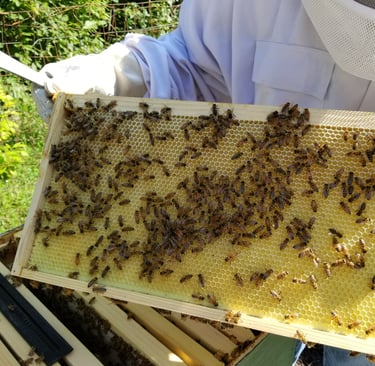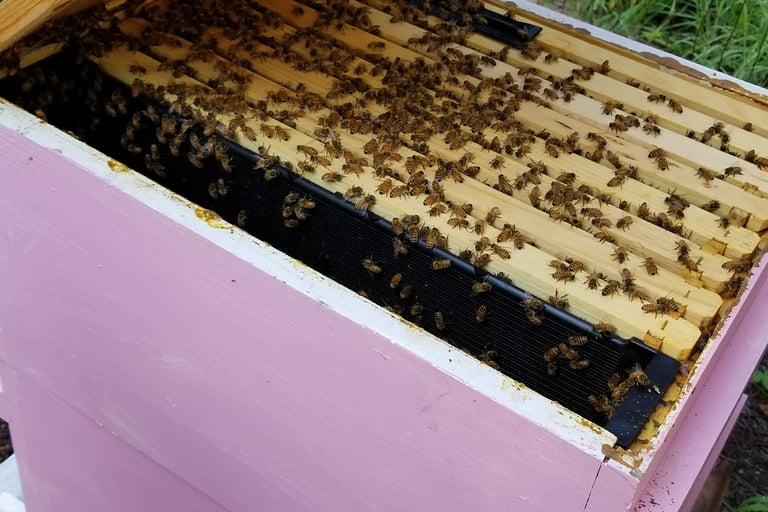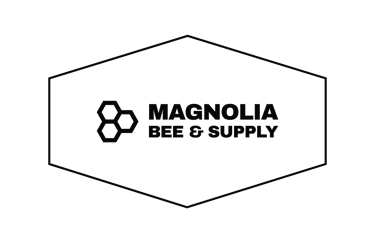

How to Manage Bee Colonies in Texas
Beekeeping is a rewarding hobby and a valuable source of income for many Texans. However, it also requires careful management and attention to the needs of the bees. In this blog post, we will share some tips and advice on how to manage bee colonies in Texas, based on our own experience and the best practices recommended by experts.
Joining a Beekeepers Club
Joining a beekeepers club is a great way to learn more about beekeeping, get answers to all your questions, meet others with similar interests. There are many benefits of joining a beekeepers club, such as:
- Sharing resources and knowledge with experienced beekeepers who can offer advice, guidance, and support
- Participating in events and activities that promote beekeeping education, advocacy, and conservation
- Selling your honey and other bee products at local markets or fairs
- Accessing discounts or subsidies for beekeeping equipment or services
- Enjoying the camaraderie and friendship of fellow bee enthusiasts
There are many beekeeping clubs in Texas that you can join, depending on your location and preference. You can find a list of clubs on the Texas Beekeepers Association website or by contacting your state agricultural department. You can also search online for local listings or ask around your network for recommendations.
Hive Maintenance
One of the first steps to successful beekeeping is choosing the right location and equipment for your hives. You should look for a site that provides sun, protection from strong winds, and access to water and forage. You should also invest in quality beekeeping equipment that suits the Texas climate, such as insulated hives, protective gear, and honey harvesting tools.
You should inspect your hives regularly, at least once every two weeks, to monitor the health and productivity of your colonies. You should check for signs of pests, diseases, swarming, or robbing, and take appropriate actions to prevent or treat them. You should also ensure that your hives have enough space, ventilation, and insulation to accommodate the growth and activity of your bees.
Feeding
Feeding your bees is essential to keep them healthy and productive, especially during times of dearth or extreme weather. You should provide your bees with sugar syrup or fondant as a supplemental food source when natural nectar is scarce or when preparing them for winter. You should also provide them with pollen patties or substitute when natural pollen is insufficient or when stimulating brood production.
You should feed your bees only when necessary and avoid overfeeding them. You should also use clean feeders and containers to prevent contamination or fermentation. You should monitor the consumption of your bees and adjust the feeding accordingly.
Harvesting
Harvesting honey is one of the most rewarding aspects of beekeeping, but it also requires careful planning and timing. You should harvest honey only when the honey flow is over and when most of the honey cells are capped by the bees. You should leave enough honey for your bees to survive the winter or the next dearth period.
You should use gentle methods to remove the bees from the honey supers, such as bee escapes, fume boards, or brushes. You should avoid using chemicals or smoke that may affect the quality or flavor of the honey. You should extract the honey as soon as possible after harvesting and store it in clean containers in a cool and dark place.
Pest Control
Pest control is a crucial part of beekeeping, as pests can cause significant damage or loss to your colonies. Some of the common pests that affect bees in Texas are varroa mites, small hive beetles, wax moths, ants, mice, skunks, raccoons, and bears. You should inspect your hives regularly for signs of pest infestation and use integrated pest management (IPM) strategies to control them.
IPM strategies include cultural, mechanical, biological, and chemical methods that aim to reduce the pest population and minimize the impact on the bees and the environment. Some examples of IPM strategies are:
- Keeping strong and healthy colonies that can resist or tolerate pests
- Maintaining good hygiene and sanitation in and around your hives
- Using screened bottom boards, entrance reducers, traps, or barriers to exclude or remove pests
- Introducing beneficial insects or animals that prey on or compete with pests
- Applying organic or synthetic pesticides or treatments that are approved for beekeeping and following the label instructions carefully
Disease Prevention
Disease prevention is another important aspect of beekeeping, as diseases can weaken or kill your colonies. Some of the common diseases that affect bees in Texas are American foulbrood (AFB), European foulbrood (EFB), chalkbrood, nosema, deformed wing virus (DWV), chronic bee paralysis virus (CBPV), and sacbrood virus (SBV). You should inspect your hives regularly for signs of disease and use preventive measures to avoid them.
Preventive measures include:
- Keeping strong and healthy colonies that can resist or recover from diseases
- Maintaining good hygiene and sanitation in and around your hives
- Replacing old or damaged combs and frames with new ones
- Using resistant or hygienic bee stocks that can detect or remove diseased brood
- Feeding your bees with adequate nutrition and supplements
- Quarantining or requeening infected colonies
- Reporting any suspected cases of AFB to the Texas Apiary Inspection Service (TAIS) as it is a reportable disease in Texas
Winterization
Winterization is the process of preparing your colonies for the winter season, which can be challenging in Texas due to its variable climate. You should winterize your colonies from late fall to early winter, depending on your location and weather conditions. You should aim to provide your colonies with enough food, protection, and ventilation to survive the winter.
Some of the steps to winterize your colonies are:
- Feeding your bees with sugar syrup or fondant until they have enough honey stores for the winter
- Reducing the hive entrances and adding mouse guards to prevent pests and cold drafts
- Providing upper ventilation to reduce moisture and condensation in the hive
- Elevating or tilting your hives slightly to allow water drainage
- Checking your hives periodically for signs of starvation, disease, or pest infestation and feeding or treating them as needed
Conclusion
Beekeeping in Texas can be a rewarding and profitable activity, but it also requires careful management and attention to the needs of the bees. By following the tips and advice we shared in this blog post, you can successfully manage your bee colonies in Texas and enjoy the benefits of beekeeping.


Get in touch
Address
1010 Magnolia Bvld Suite K
Magnolia Tx, 77355
www.magnoliabeeandsupply.com
Magnolia, Texas 77355
Contacts
281-305-4072
info@magnoliabeeandsupply.com
magnoliabeeandsupply@gmail.com
Provide your email address below to stay informed of specials offers, other beekeeping related information
